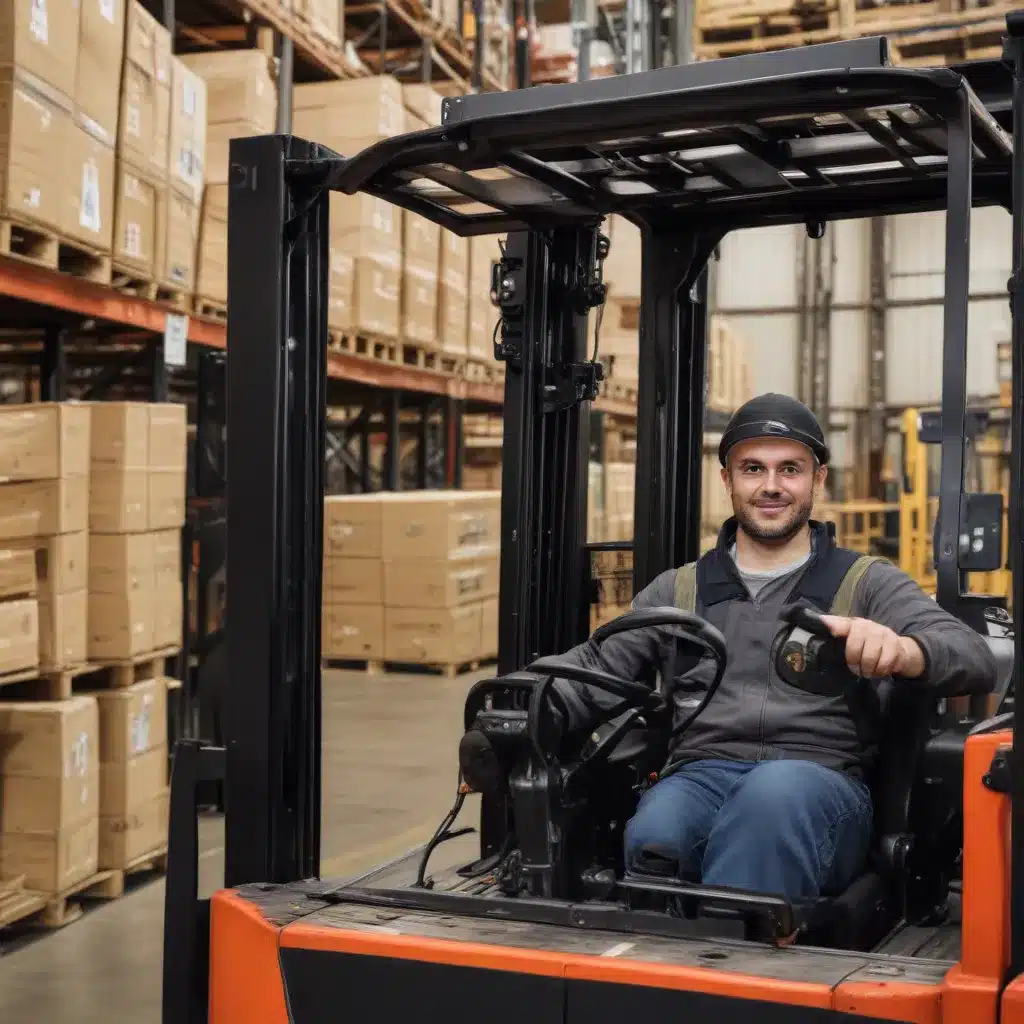
The Importance of Forklift Camera Systems in Warehouse Operations
In the dynamic and fast-paced world of warehousing and logistics, ensuring the safety and efficiency of forklift operations has become a crucial concern for industry professionals. As warehouses continue to evolve, incorporating advanced technologies like forklift camera systems has emerged as a strategic solution to enhance visibility, improve operator performance, and promote a safer work environment.
Enhancing Operator Visibility and Safety
Forklift operators often face the challenge of limited visibility, especially when dealing with large attachments or maneuvering in tight spaces. This can lead to increased risks of collisions, product damage, and personnel injuries. Forklift camera systems address this issue by providing the operator with a clear, real-time view of their surroundings, including blind spots and potential hazards. By integrating these camera systems, operators can navigate with greater confidence, avoid potential obstacles, and significantly reduce the likelihood of accidents.
Cameras mounted on the forklift, whether on the rear, tractor, or other strategic locations, offer a 360-degree view that eliminates blind spots and enhances the operator’s situational awareness. This increased visibility not only improves safety but also contributes to more efficient warehouse operations, as operators can maneuver through tight spaces, accurately stack pallets, and reduce the need for additional spotters or ground personnel.
Boosting Productivity and Operational Efficiency
Forklift camera systems have a direct impact on warehouse productivity and operational efficiency. By providing operators with enhanced visibility, these systems enable faster and more precise material handling, resulting in increased throughput and reduced downtime. Operators can navigate confidently, accurately position loads, and avoid potential hazards, leading to a more streamlined and efficient workflow.
Furthermore, forklift cameras can assist in optimizing warehouse space utilization. With improved visibility, operators can now access higher rack levels and utilize vertical space more effectively, reducing the need for wider aisles and maximizing storage capacity. This strategic use of space can significantly enhance a warehouse’s overall productivity and responsiveness to changing customer demands.
Enhancing Training and Accountability
Forklift camera systems can play a pivotal role in the training and development of new operators. By providing a clear view of the forklift’s operations, these systems allow new hires to learn more quickly and effectively, accelerating their proficiency and reducing the time required to become fully productive. Additionally, camera footage can serve as valuable training and reference material, enabling companies to document and review best practices, identify areas for improvement, and ensure consistent adherence to safety protocols.
Beyond training, forklift camera systems can also enhance accountability within the warehouse environment. By recording forklift operations, companies can monitor operator behavior, verify adherence to checklists, and investigate incidents if they occur. This data can provide objective evidence for liability claims, product damage assessments, and informed decision-making around warehouse operations.
Integrating Forklift Cameras: Considerations and Best Practices
When it comes to incorporating forklift camera systems into your warehouse operations, there are several factors to consider to ensure a successful implementation:
Camera Placement and Configuration
The strategic placement of forklift cameras is crucial for maximizing visibility and coverage. Cameras should be positioned to provide a comprehensive view of the forklift’s surroundings, including the front, rear, and sides, as well as potential blind spots. The camera configuration should be tailored to the specific forklift model and warehouse layout to ensure optimal performance.
Camera Specifications and Durability
Forklift cameras must be designed to withstand the harsh conditions of the warehouse environment. Factors such as vibration, temperature extremes, and exposure to dust and moisture should be taken into account when selecting camera systems. Choose durable, weatherproof cameras that can reliably function in your operational setting.
Integration with Existing Systems
Seamless integration with existing warehouse management systems, fleet tracking software, or other technology platforms can further enhance the value of forklift camera systems. Explore options that allow for easy data sharing, remote monitoring, and centralized fleet management.
Operator Training and Engagement
Successful implementation of forklift camera systems requires comprehensive training and engagement with the operators. Ensure that all forklift operators understand the purpose, functionality, and benefits of the camera systems, and provide them with the necessary guidance to effectively utilize the technology. Encourage feedback and input from operators to optimize the system for their needs.
Regulatory Compliance and Legal Considerations
While the use of forklift cameras is not universally mandated, it is essential to understand and comply with any applicable laws, regulations, and industry standards in your area. Consult with legal and safety professionals to ensure that your forklift camera integration aligns with all relevant requirements.
Partnering for Forklift Camera Expertise
Integrating forklift camera systems into your warehouse operations can be a transformative step, but it’s important to work with experienced industry experts who can provide comprehensive solutions and support. Companies like HCO Innovations, with their extensive knowledge of warehouse optimization and forklift fleet management, can guide you through the entire process, from initial assessment to seamless implementation and ongoing maintenance.
By partnering with these experts, you can ensure that your forklift camera system is tailored to your specific needs, maximizing the benefits of improved visibility, enhanced safety, and increased productivity. HCO Innovations’ collaborative “boots on the ground” approach and advanced cost-tracking software can help you achieve significant operational efficiencies and cost savings.
Embrace the power of forklift camera integration and partner with industry leaders to revolutionize your warehouse operations. Visit www.forkliftreviews.com to explore more resources and connect with experts who can help you unlock the full potential of your forklift fleet.

